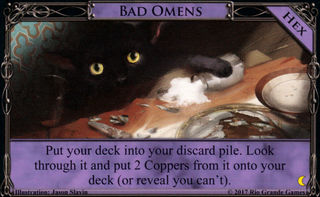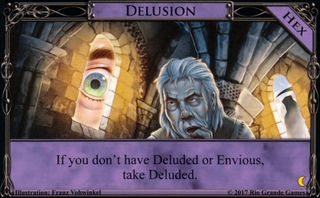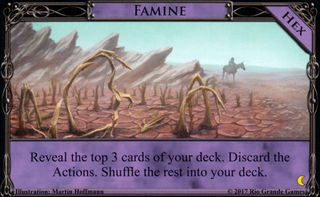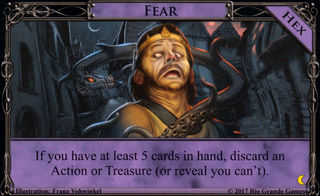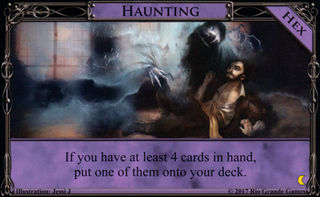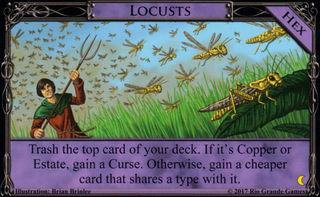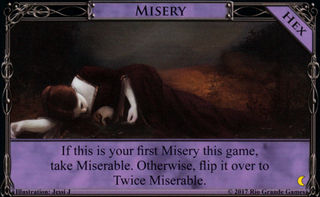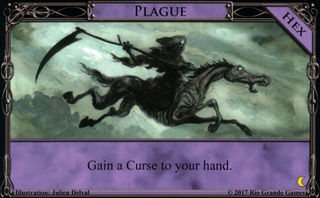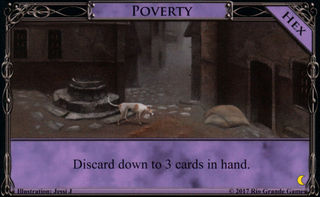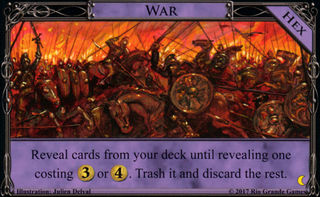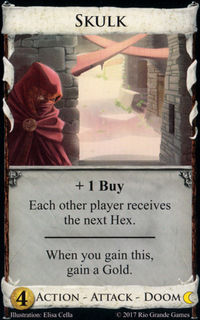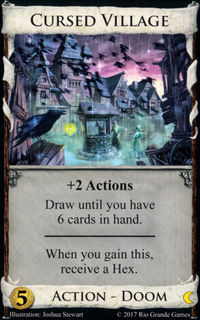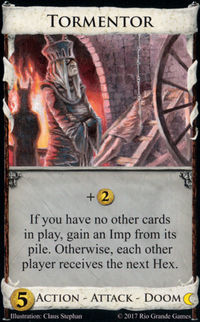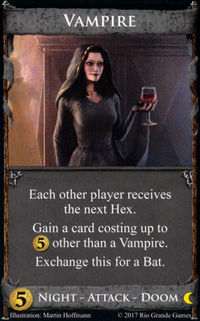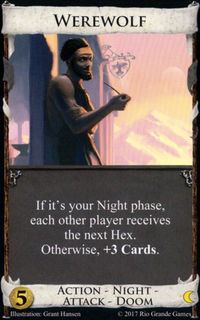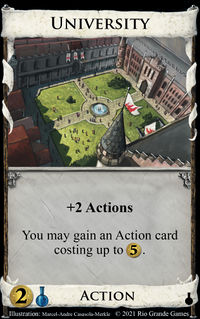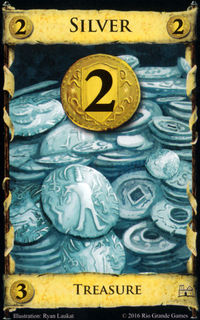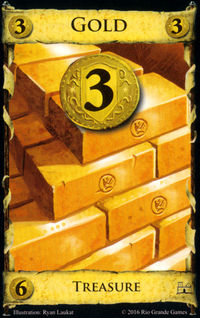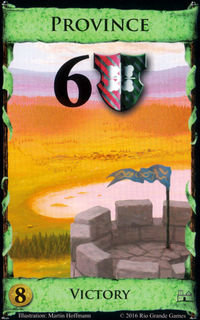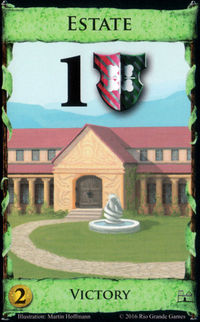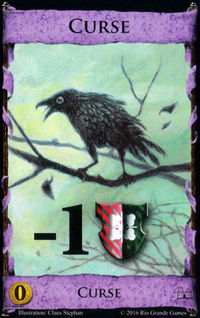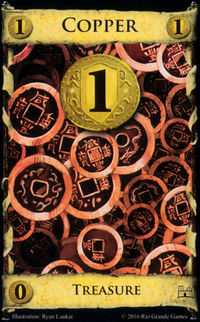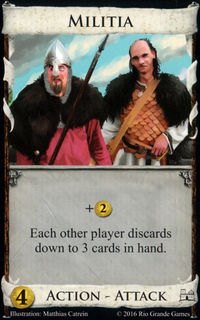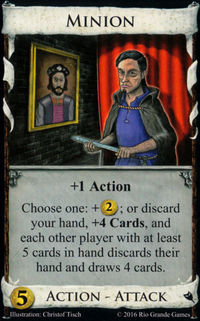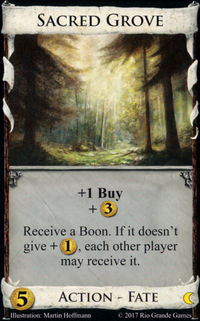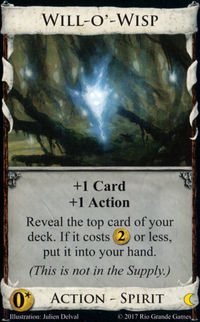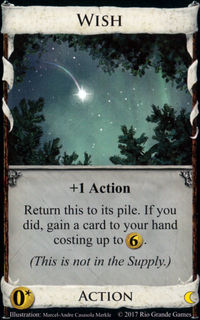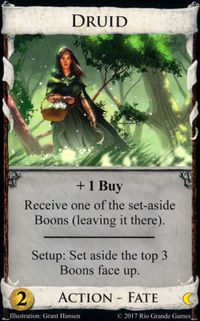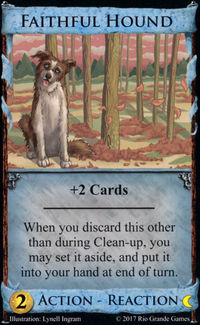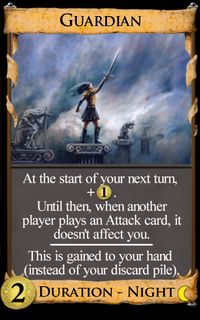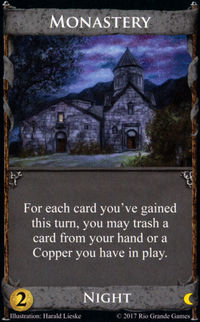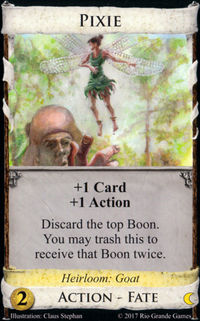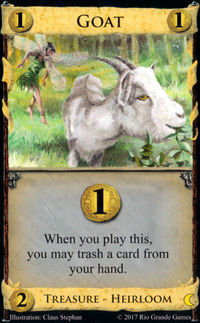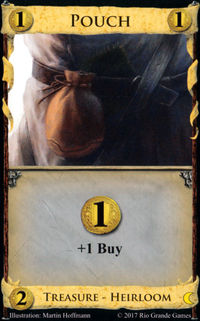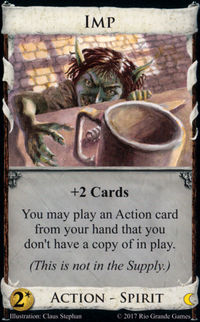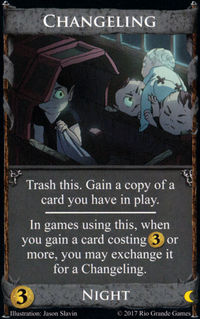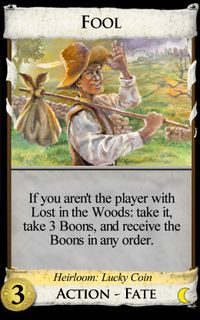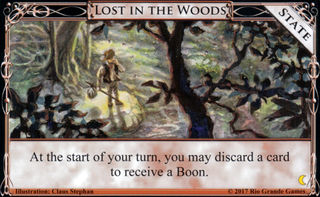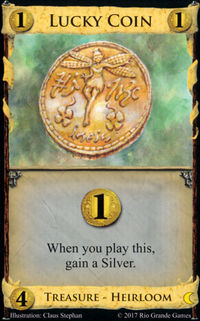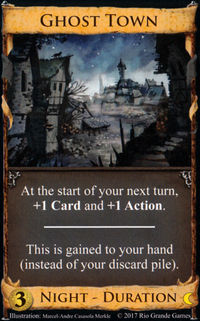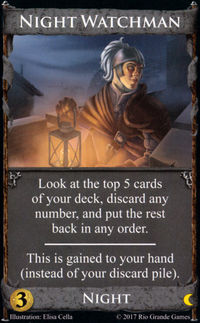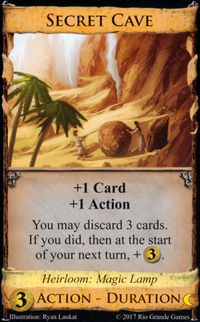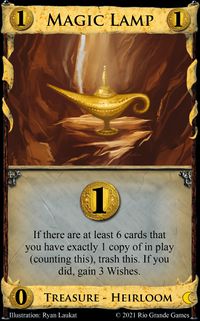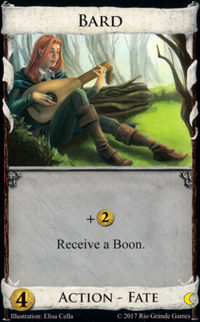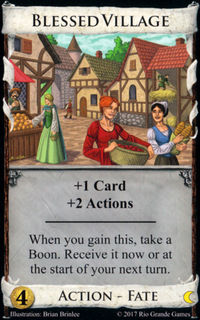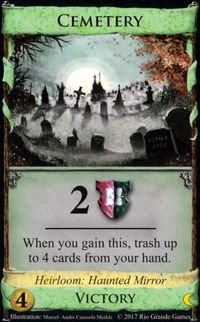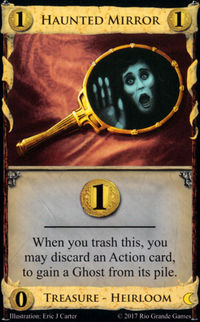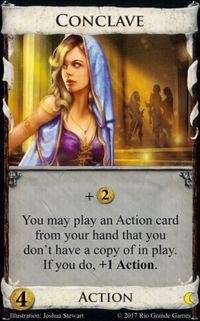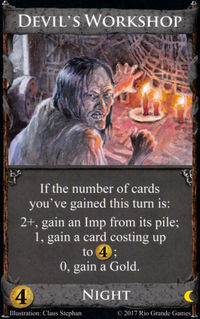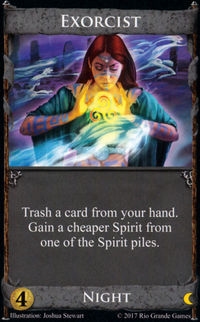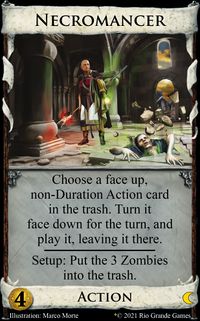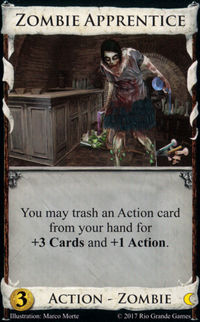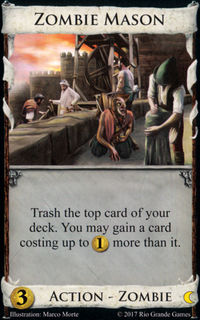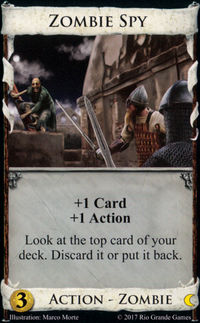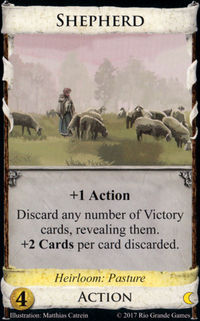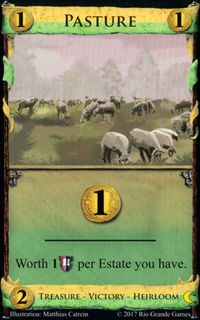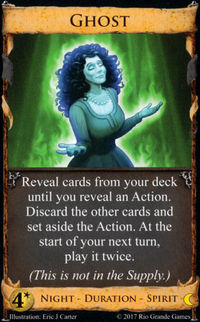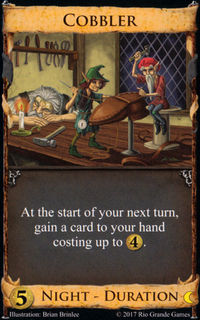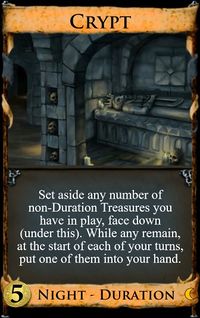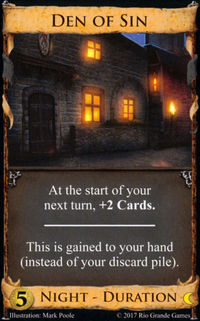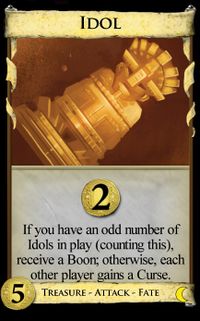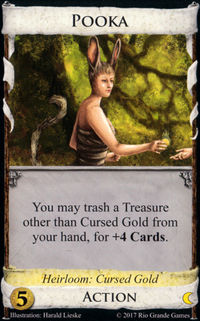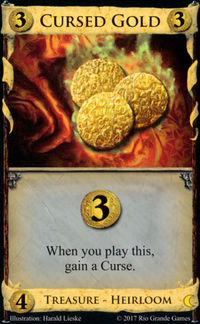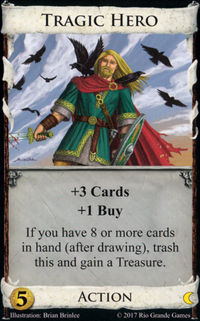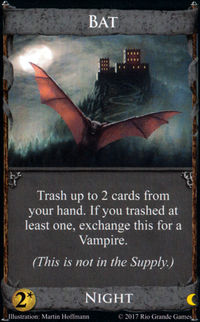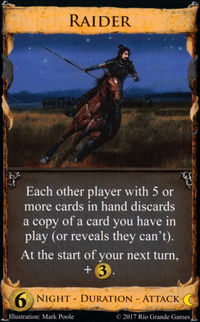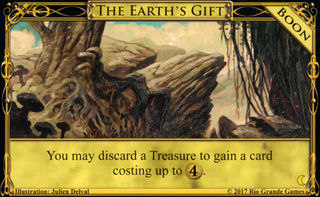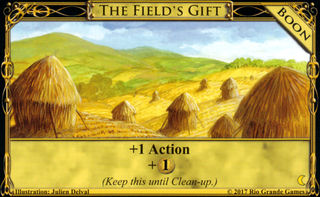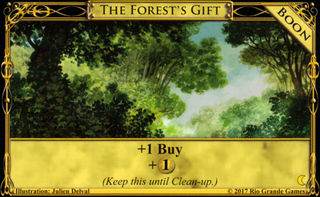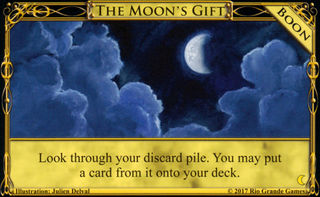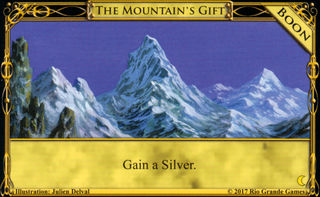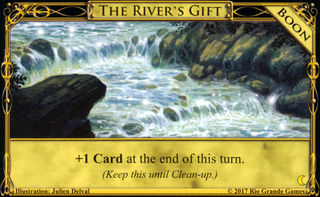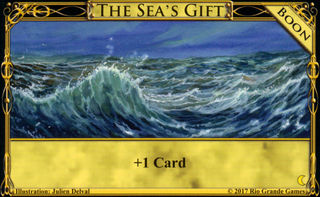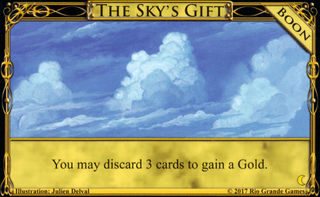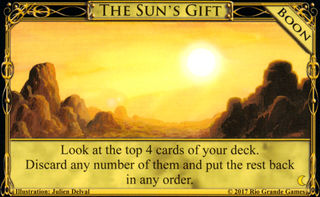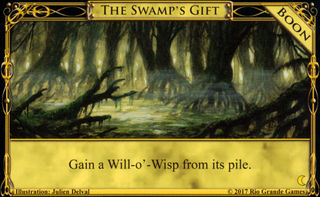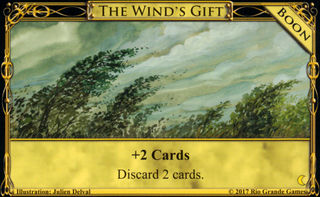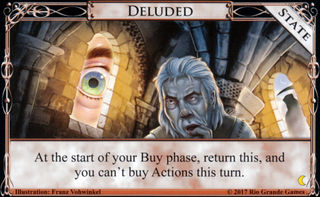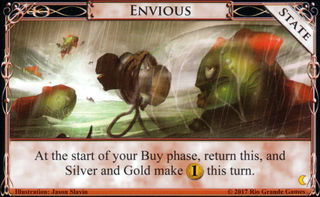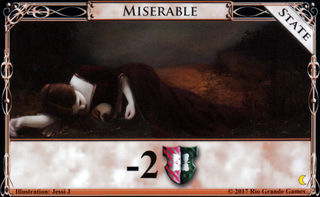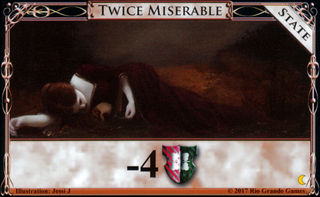Hex
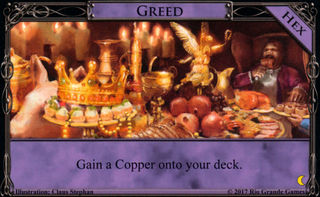
Hexes, introduced in Nocturne, are harmful effects. They are dispensed by Doom cards.
The pile of 12 Hexes is shuffled, and when a Doom card instructs you to receive a Hex, you draw the next one and get whatever harm it tells you, and return it to the Hex discard pile when you've resolved it. If the Doom card is an Attack, only one Hex is revealed, and it affects all other players. When the Hex pile is exhausted, the discarded Hexes are reshuffled.
Hexes are not "cards"; any text referring to a "card" does not apply to Hexes. However, for reference, the Hex effects are printed on cards in a landscape orientation with dark purple frames.
Contents |
Official Rules
- Hexes are a face-down deck of cards that are revealed as needed.
- The phrase "receive a Hex" means, turn over the top Hex, and follow the instructions on it.
- "Each other player receives the next Hex" means, turn over just one Hex, and the other players all follow the instructions on that same Hex.
- If all Hexes have been used, shuffle the discards to reform the deck; do this whenever the deck is empty.
- Received Hexes always go to the Hexes discard pile.
Preparation
- If any Kingdom cards have the Doom type, shuffle the Hexes and put them near the Supply, and put Deluded/Envious and Miserable/Twice Miserable near the Supply also.
List of Hexes
Cards that Use Hexes
The Doom cards use the Hexes
Gallery
Cards that use Hexes (Doom cards)
Strategy
Hexes are usually thought of primarily as a form of attack, as most Doom cards (Vampire, Werewolf, Skulk, and Tormentor) are Attacks that allow you to inflict a Hex on your opponents. This attack has widely varied effects, and you cannot easily predict which Hex will hit your opponent or guarantee that e.g. they will always start their turn with a reduced hand size. By chance, some Hexes may fail to harm or may even benefit your opponent. On average, the impact of a single random Hex is somewhat low, and so attacking with Hexes is usually more of a supplementary benefit than an end goal of building. If you are able to attack with multiple Hexes per turn, however, your odds of landing at least one impactful Hex increase. Additionally, the variety of effects means that Hexes stack relatively well in comparison to other types of attack: while most handsize attacks are effective only once per turn, and most junking attacks become ineffective when they run out of junk to distribute, Hexes are likely to keep hurting your opponent, even if they have already been Hexed many times. Hexes usually have only a minor impact on the game in the case of the two Doom cards (Cursed Village and Leprechaun) that can cause you to inflict a Hex on yourself, but many analogous tactical issues apply when you are considering doing so.
The inherent randomness of Hexes can make them difficult to concretely plan around, but because the Hexes are dealt from a shuffled deck, it is possible to track which ones have been given out and deduce which ones still remain in the deck. As the game proceeds and the pool of remaining Hexes gets smaller, it becomes increasingly easy to predict which Hex will come next. This information is most likely to be valuable in the short term: for example, if you would specifically like to attack with Misery (and avoid taking it yourself), it’s worth calculating the precise odds you have of finding it this turn, and potentially playing around that possibility (e.g., by using a Throne Room variant to play your Tormentor more). More rarely, it might be possible to tailor your play to increase or even guarantee your odds of hitting your opponent with a particular hex in the slightly longer term. For instance, if your preferred Hex and two others are the only ones left in the pile and you currently have a single Tormentor, it might be worth building by buying another Tormentor, guaranteeing that you can inflict three Hex attacks (including your particular target) over this turn and next. While relevant scenarios are less common, similar logic applies to interacting with the non-Attack Doom cards. For example, when using a gainer such as University to gain a Cursed Village mid-turn, it is worth considering the risk of getting hit with Poverty.
While planning around a given Hex is uncommon given the low odds of finding any particular one, it is important to understand each one’s potential impact. While any of the Hexes can have specific situations in which they can be extremely painful or completely irrelevant, some are more likely to cause significant impact than others.
- Delusion is one of the strongest Hexes because buying Action cards is very often a critical component of building, and denying your opponents this opportunity at a crucial juncture can give you a relatively stronger deck. This Hex also can give you temporarily uncontested access to Actions in the Supply, which may be important in contesting a split or (more commonly) lowering for a pileout.
- Envy is somewhat situational, but can greatly diminish a player’s payload if they are heavily reliant on Silver or Gold. This can potentially make them miss a key price point, such as for Province in the endgame.
- Because it gives a permanent
 penalty, Misery can be highly impactful in games with low final scores (e.g. three-pile endings), or in Kingdoms that have a low ceiling on how much you can score per turn (e.g. one Province per turn). As the
penalty, Misery can be highly impactful in games with low final scores (e.g. three-pile endings), or in Kingdoms that have a low ceiling on how much you can score per turn (e.g. one Province per turn). As the  difference is permanent and has no effect on either player’s deck control, giving your opponent Misery is comparable to receiving 2
difference is permanent and has no effect on either player’s deck control, giving your opponent Misery is comparable to receiving 2  tokens, and as such can act as a very small amount of alt-VP.
tokens, and as such can act as a very small amount of alt-VP.
- As trashing attacks, Locusts and War are among the stronger Hexes on average, but their actual impact is highly dependent on what card is trashed. For example, Locusts can be fairly impactful if it replaces a strong Action with a relatively weak one, while converting an Estate into a Curse hurts a deck’s efficacy very little. Similarly, War can trash either villages (often high impact) or Silvers (usually low impact).
- Plague and Greed have a moderate impact as junking attacks, depending mostly on how easy it is to thin that junk. While it is generally easier to trash the Curse from Plague given it is gained to hand and does not immediately impact deck control, the -1
 can be important if doing so is difficult. Greed gives a slightly less harmful junk card in Copper, but does reduce your opponent’s cycling and increases their odds of dudding by topdecking the Copper.
can be important if doing so is difficult. Greed gives a slightly less harmful junk card in Copper, but does reduce your opponent’s cycling and increases their odds of dudding by topdecking the Copper.
- Poverty, Haunting, and Fear function like handsize attacks, of which Poverty is typically the strongest. These Hexes are generally weak in impact given you cannot consistently attack with them. It is worth noting that generally these have very little effect when buying a Cursed Village, because by that point in the Buy phase your hand size is usually below the relevant threshold.
- Bad Omens and Famine work like deck order attacks. Their effect is generally low impact, can be useless against a player with strong deck control or a minimal amount of junk, and can even provide positive cycling for your opponents.
Trivia
In other languages
- Dutch: Spreuk
- French: Sortilège (lit. magic spell)
- German: Plage (lit. plague)
- Polish: Urok
- Russian: Порча (pron. porcha, lit. corruption)
Preview
Nocturne has Hexes. Hexes are another 12-card deck of landscape-style instructions. These ones are bad though. You get an effect like "each other player receives the next Hex," and then you turn over just one Hex, just one okay, and they all get that Hex. Of course sometimes you Hex yourself instead.
Secret History
Outtakes
There were multiple versions of the discard attacks, with Poverty leaving and then coming back. One tried to have you discard a copy of your top card, which missed too much. At one point I tried "discard an Action" and "discard a Treasure," at Billy's suggestion. They take way way more words than that and were not great. Billy suggested putting Minion in but I didn't enjoy it and so in the end there's Fear, also Billy's suggestion.
One trashing attack dug for a Treasure other than Copper and trashed it.Donald X.'s second thoughts about complexity
There are 12 Boons to read too, but it's a world of difference. You turn over your Boon. Gain a Silver. Okay, done. There are a few wordier ones but they are not the problem the hexes were. And only one player has to read and understand the Boon, that helps too. (Sacred Grove: one of the cards to not do in my five.)
Strategic complexity is great. It's not a problem at all, I can have as much as I manage. Having to deal with 18+ concepts over the course of playing with a card is a nightmare.

